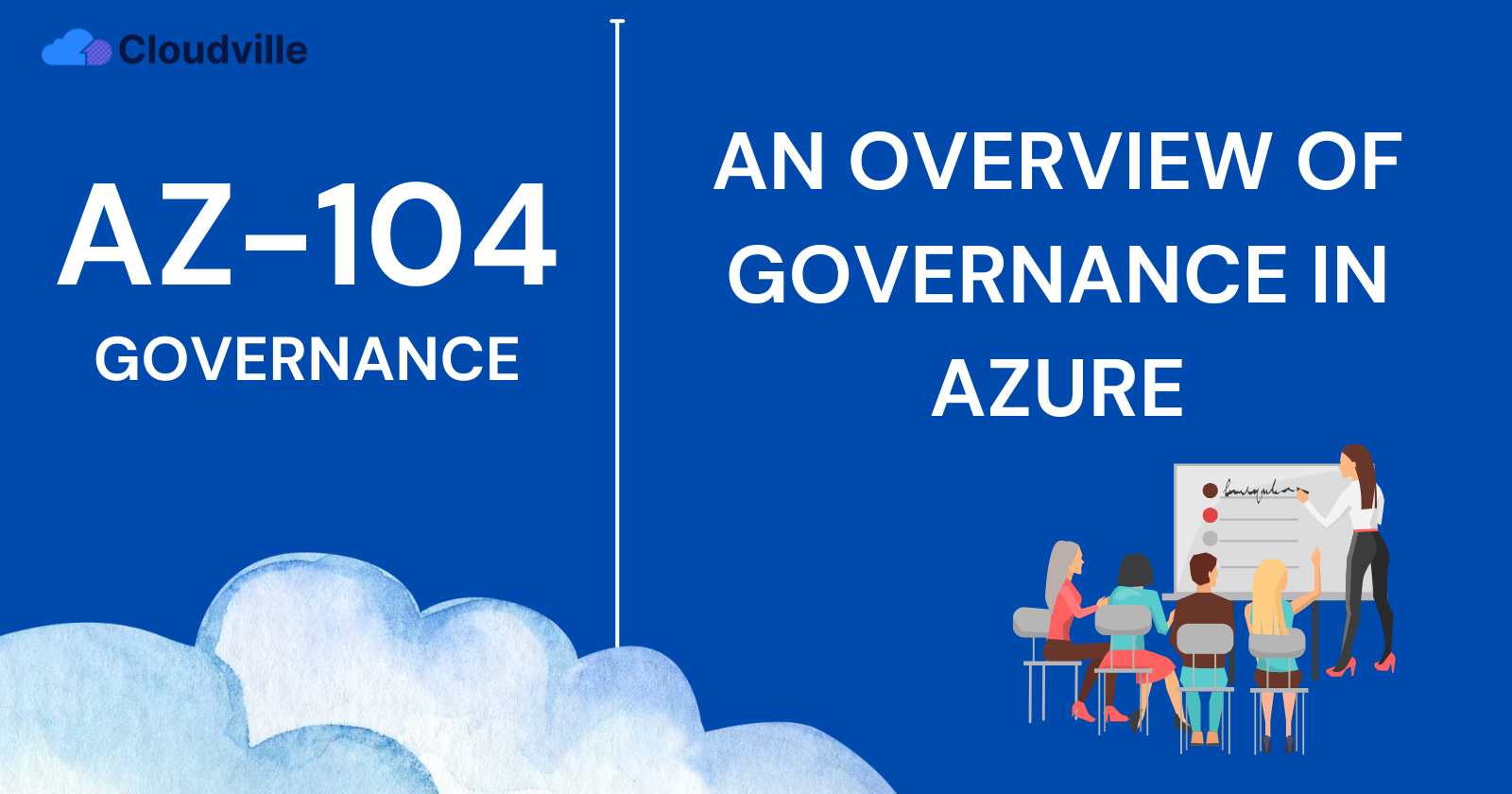What is Governance in Cloud Computing?
 Cloudville
Cloudville
Cloud computing has changed how businesses operate, offering flexibility, scalability, and cost-effectiveness. However, without rules and structure, it can become chaotic. For example, managing access to specific resources based on departments in an organization requires clear policies to ensure security and efficiency.
Governance provides the necessary rules and structure to keep cloud environments organized, cost-effective, and secure. This article aims to provide a clear understanding of governance in cloud computing.
Why is Governance Important in Azure?
Governance plays a crucial role in maintaining control over cloud infrastructure. Without it, organizations risk security breaches, compliance violations, and unnecessary expenses. There are many reasons why governance is essential in Azure, but some of them include:
Security and Compliance: Azure governance helps organizations enforce security standards, ensuring that data and workloads remain protected against unauthorized access and threats.
Cost Management: Governance ensures that cloud spending is optimized by monitoring usage and preventing wasteful resource allocations.
Consistency and Standardization: Organizations can apply uniform policies across subscriptions to streamline operations and maintain consistency in cloud management.
Operational Efficiency: Automated governance reduces manual oversight, enabling IT teams to focus on strategic tasks rather than administrative enforcement.
Key Azure Governance Tools
Microsoft Azure provides several governance tools to help organizations implement structured cloud management:
Azure Policy: Azure Policy is a governance tool that helps organizations enforce standards and monitor compliance across their Azure resources at scale. It enables users to create, assign, and manage policies that apply specific rules to resources, ensuring they align with corporate standards and service-level agreements. With a built-in compliance dashboard, Azure Policy provides an overview of policy adherence across the environment, allowing users to analyze compliance at the resource level. It supports key governance actions, such as:
Restricting resource deployment to approved regions.
Enforcing consistent tagging across resources.
Requiring diagnostic logs to be sent to a Log Analytics workspace.
- Azure Role-Based Access Control (RBAC): Azure RBAC is a governance system built on the Azure Resource Manager. This means that access to Azure Resources are fine-grained only authorized individuals can perform specific actions within Azure. Because Access and Control is an important function for any organization looking to migrate or use the cloud, there is a need to manage user access and permissions based on assigned roles. RBAC answers three questions as shown in the image below:
Azure Cost Management: In Microsoft, Cost Management is available to anyone with access to a billing account, subscription, resource group, or management group. Azure Cost Management helps organizations track cloud spending and optimize resource usage. Key functionalities include:
Cost Analysis: Provides interactive analytics and insights, allowing users to explore and quickly understand their spending patterns.
Budgets: Enables users to set spending limits, track expenses, and promote financial accountability within the organization.
Cost Alerts: Notifies users about spending trends, helping them stay informed and proactively manage their costs.
Advisor Recommendations: Identifies idle or underutilized resources and suggests optimizations, such as reservations and savings plans, to reduce overall Azure costs.
Conclusion
Implementing governance best practices is important for organizations to design a successful and sustainable cloud strategy. Effective governance in Azure ensures that organizations maintain control over their cloud resources while meeting security, compliance, and cost-efficiency goals. By leveraging tools like Azure Policy, Management Groups, Blueprints, RBAC, and Cost Management, businesses can streamline operations, enhance security, and optimize cloud spending.
Subscribe to my newsletter
Read articles from Cloudville directly inside your inbox. Subscribe to the newsletter, and don't miss out.
Written by
